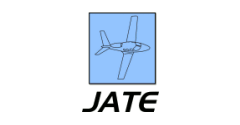Changing the Process in Educational Field and Air Navigation through Advances in Hologram Technology
Abstract
The objective of this piece is to propose reasons that change the way air traffic controllers and others learn and work in air navigation, but also how they can improve workloads, due to the implementation of holographic radar. This research also aims to describe how this could reduce the cognitive load of an operator, thanks to the improvement of visual perspective and capacity of analysis, in order to more easily control an aircraft.
Seeing that the visual facilitation is well known, radar is able to represent in three dimensions and in detail that which could not previously be perceived. This makes a substantial difference in the comfort and ease of training new controllers. In conjunction with operators, the objective of this technology is to save both hours and cost of training. This is of tremendous benefit, as some countries spend millions of dollars trying to educate the personnel in charge of air traffic control. In addition, a goal of this technology is the further improvement in air safety in a sector that demands more jobs and more availability to people in the industry, with an increasing number of aircraft in the world. This makes air traffic control one of the more demanding careers in the global arena.
Recommended Citation
Fernandez, Camilo Sr.
(2021)
"Changing the Process in Educational Field and Air Navigation through Advances in Hologram Technology,"
Journal of Aviation Technology and Engineering:
Vol. 10:
Iss.
1, Article 2.
Available at: https://doi.org/10.7771/2159-6670.1212
Included in
Aviation and Space Education Commons, Aviation Safety and Security Commons, Electrical and Computer Engineering Commons, Engineering Education Commons, Multi-Vehicle Systems and Air Traffic Control Commons


